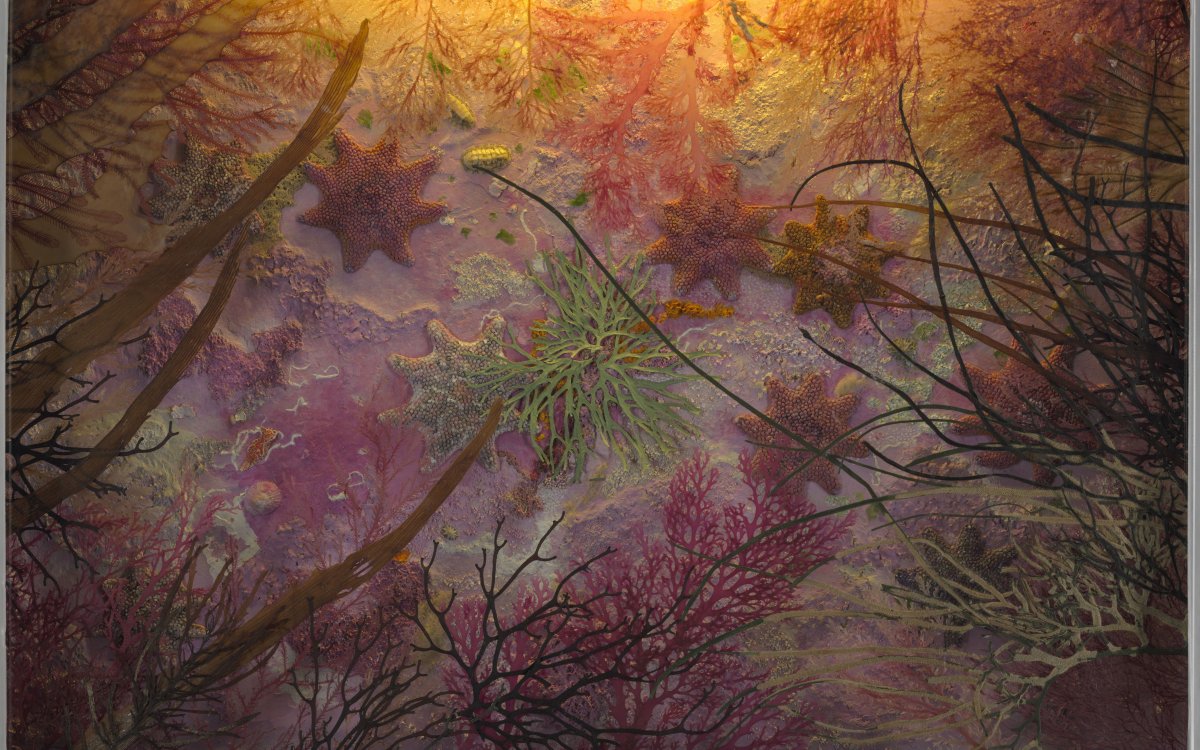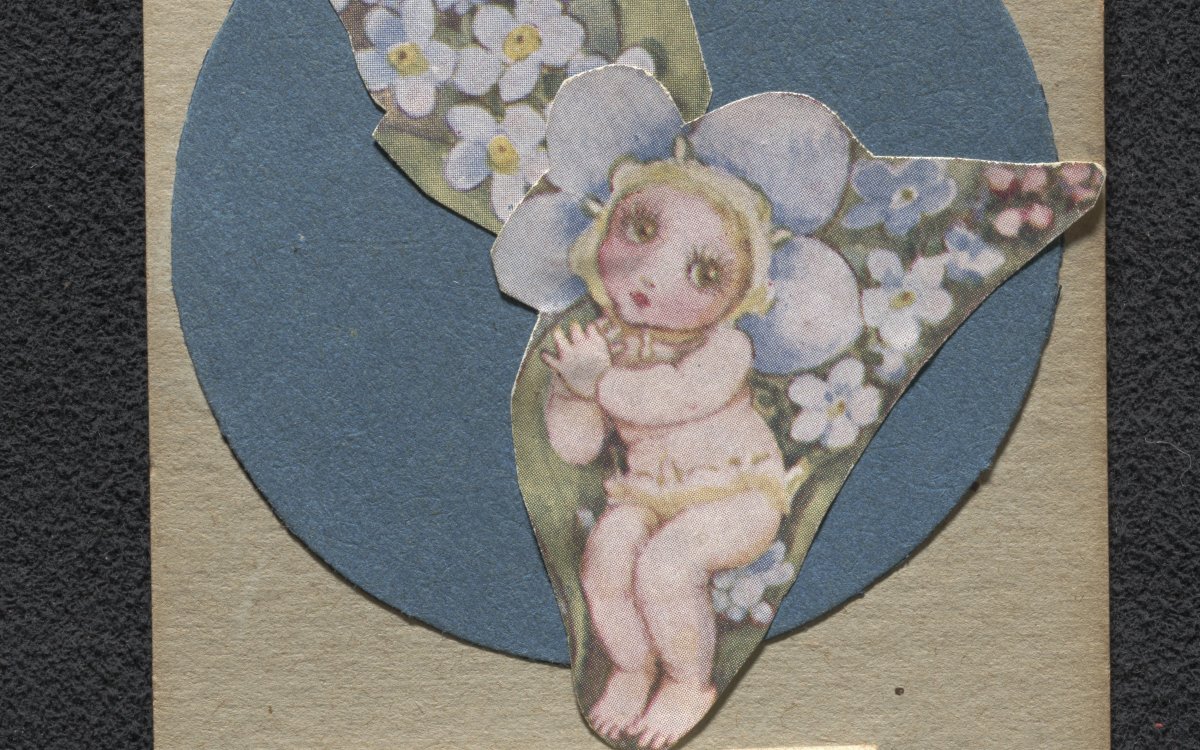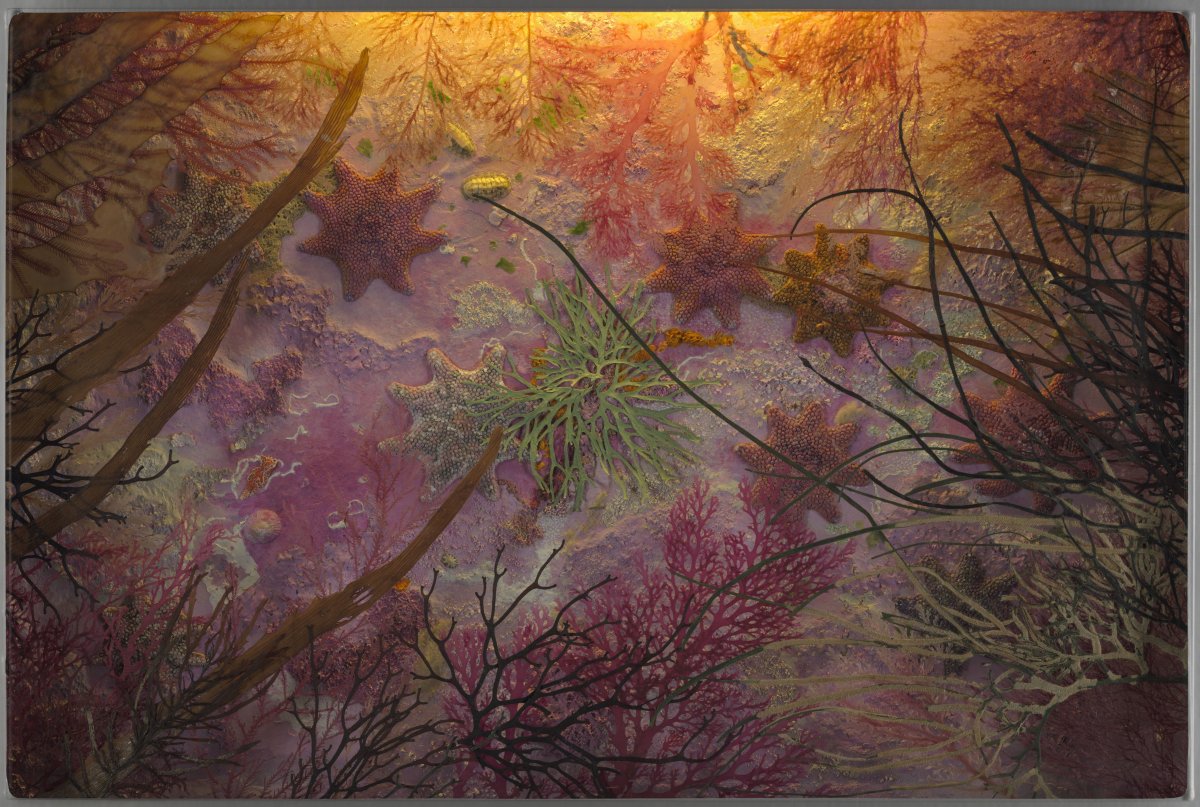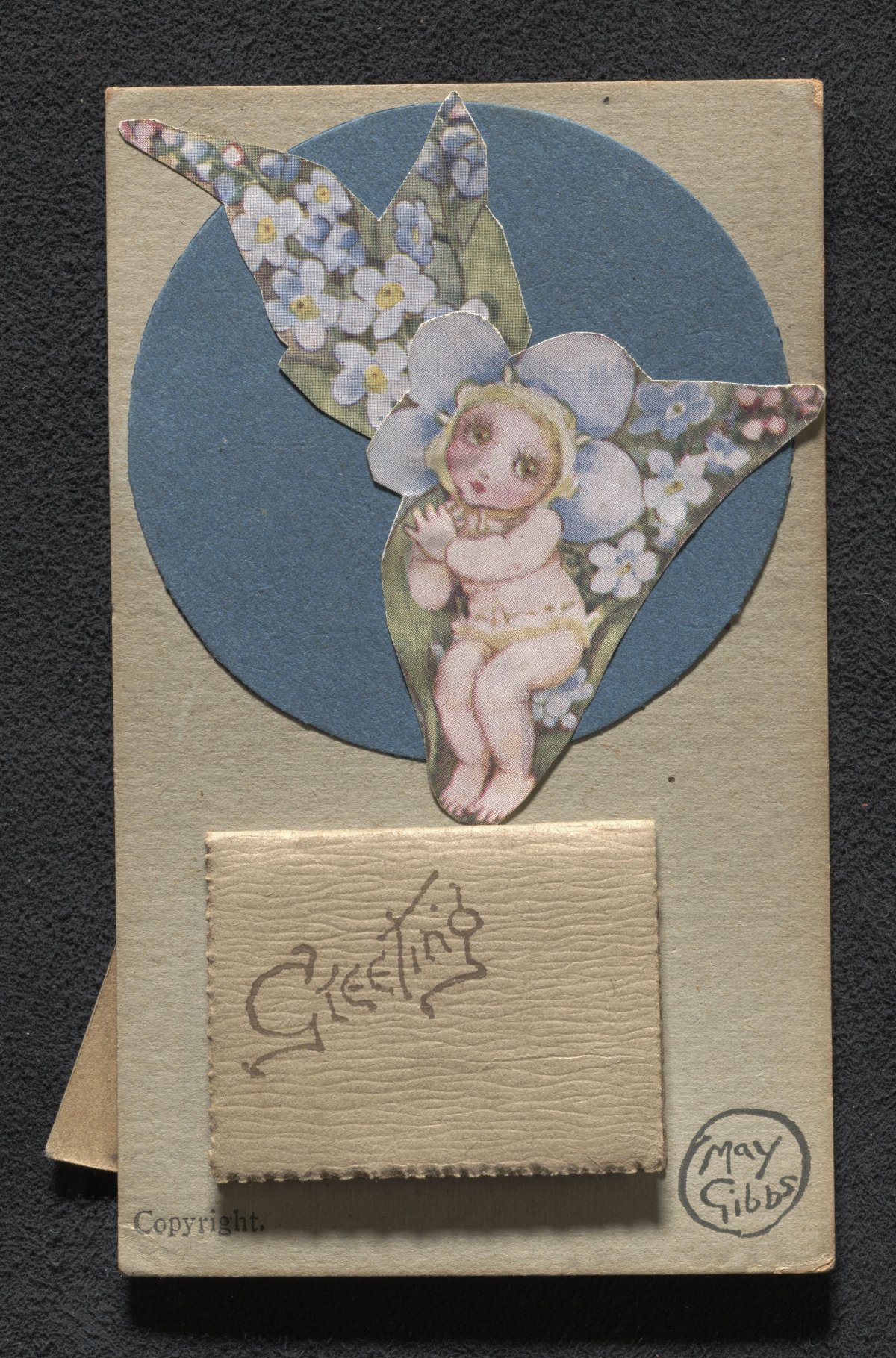
Baker, Jeannie Hidden forest. (2000). Endpapers / Jeannie Baker. http://nla.gov.au/nla.obj-971313378

Gibbs, May, 1877-1969. (1926). Greeting, gumnut baby amongst forget-me-nots, 1926 / May Gibbs. https://nla.gov.au/nla.obj-1088255831
Writing and illustrating a children’s book involves many steps. Sometimes one person takes on both tasks, while at other times an author and an illustrator work together to bring a story to life.
By looking at some of the preliminary components alongside final illustrations and published versions, we gain a deeper appreciation of the work that goes into producing a book for children.
Activities
Understanding the creative process helps students to successfully create their own literary texts. Breaking down the stages of the process will help bring it to mind when students are asked to work in this way.
First, discuss the definitions that make up the term ‘creative process’.
Creative: relating to or involving the use of the imagination or original ideas to create something, having good imagination or original ideas.
Process: a series of actions or steps taken in order to achieve a particular end.
As a class, map out the steps involved in creating a work. These might include:
- groundwork or preparation – storyboarding, sketching, mind-mapping, conversations, discussions, debates and so on
- cultivation of ideas by using the imagination, for example, using multimedia to create audio-visual items attached to ideas
- articulation of the work through drafts and prototyping
- production of the final work through edits and revisions.

